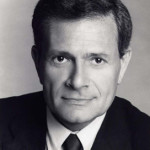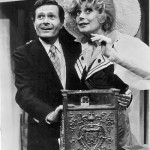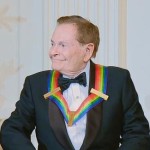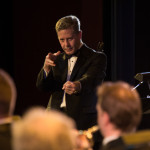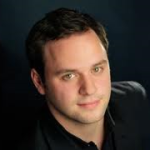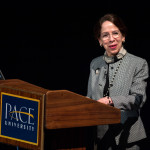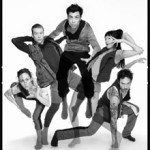“Hello Jerry!” American Showstoppers Salutes Legendary Composer Jerry Herman!
“It’s so nice to see you back where you belong!” It is only fitting that on the fiftieth anniversary of his most iconic show, American Showstoppers, led by the incomparable Fred Barton Orchestra, will be celebrating the master of the show tune himself, Jerry Herman. Yes, It has been fifty years since Carol Channing first sulked down the grand staircase of the Harmonia Gardens (at the St. James Theatre) in that crimson red gown and gaudy peacock feather head dress to sing the song that would cement Jerry Herman’s place in Broadway’s firmament of great composers. Hello Dolly would go on to win, a then record breaking, ten Tony awards including Best Musical and Best Composer and Lyricist for Herman. That title song would go on to knock the Beatles from their number one spot with a much- loved cover by Louis Armstrong. But who is Jerry Herman? How did he come to write the scores of shows that would be loved by millions?
Mr. Herman was raised just across the river in Jersey City, NJ by Ruth and Harry Herman, two musically attached, middle- class professionals of Jewish descent. From September through June, they were public school teachers. In the summer months, they ran a summer camp at Stissing Lake in the Berkshire mountains. It was there that Herman began to develop his flair for musical comedy while participating in productions of golden age musicals such as Oklahoma! and Finnian’s Rainbow. After graduating from high school, Herman attended the Parson’s school of design but a chance meeting with the legendary Frank Loesser convinced him to change majors and schools. He would transfer to the University of Miami which boasted the nation’s leading and most avant- guard Theatre program. His focus was in, you guessed it, song writing. He showed early promise when he wrote an original musical as an undergraduate entitled Sketchbook. The show garnered so much interest that it played 17 sell-out performances and became the longest running show to play the University up until that time.
Upon graduating, Mr. Herman relocated back north and dove into the New York theatre scene. He self- produced an original review based on the songs he wrote in college. The review ran in Greenwich village for 48 performances and was sadly the only New York gig his mother would get to see. Shortly after the show’s run, Ruth lost her battle with cancer at the age of forty-four. While in deep mourning of his beloved mother, Herman began playing piano at jazz clubs around the city. While playing at the Showplace in 1957, Jerry was asked by the venue’s executive director to pen a show that would fill the void of their smash show, Little Mary Sunshine, that had just transferred to Broadway. The show he created was a review titled Nightcap. It was during this show that Herman would meet a young entertainer named Charles Nelson Riley who would go on to be involved in many Herman endeavors and would originate the role of the bumbling sales clerk, Cornelius Hackle in Hello Dolly! His next review for the Showplace, Parade would transfer off Broadway and would lead to his first New York book musical Madame Aphrodite, which was based on Tad Mosel’s teleplay.
As the golden age of the 1950’s was coming to a close and the turbulent 60’s were but a glimmer a way, the dawn of a new age of the Broadway musical was coming to fruition. Broadway was coming into a time of transition. The Great White way was still producing hits but the American show tune was slowly losing its momentum in the popular music scene. Rock and Roll was becoming king and the British Invasion was looming. Broadway was looking for a composer that could bring the show tune back to the top of the charts. Jerry Herman would have small success with two Broadway mountings. He contributed to the Broadway Review, From A to Z, which also featured offerings from a young Woody Allen and Fred Ebb. In 1961, Herman penned the score to his first Broadway musical Milk and Honey which was about the founding of the state of Israel. The show played a modest 543 performances. It was a meeting with David Merrick and star, Carol Channing that would bring about the biggest Broadway hit since Oklahoma! The show was Hello Dolly, a musical adaptation of Thorton Wilder’s hit play, The Matchmaker. The show was an explosive and massive success. The score brought forth one rousing show stopping number after another. None would rival the show’s 11 o’clock number and the show’s title song, Hello Dolly! As mentioned before, this song would do the impossible and join the ranks of the pop charts, competing with such popular bands as The Beatles. In 1966 Angela Lansburry jumped to the ranks of A-list celebrity and Broadway royalty with her celebrated turn in Herman’s latest hit Mame. The show’s score produced the Christmas classic, We Need a Little Christmas and would once again, showcase Herman’s ability to write a hit score.
The master would then go on to write a somewhat disappointing string of moderate successes and down-right flops. Dear World (1969), Mack & Mabel (1974) and The Grand Tour (1979) never really found their footing but are still counted among favorites by those who consider themselves true musical comedy aficionados. It wasn’t until 1983 that Jerry Herman would bring the “old fashioned hummable show tune,” back in style. Herman joined ranks with playwright, Harvey Firestein to musicalize the popular French film, La Cage Aux Folles. It marked the first time since the sixties that the composer was able to write a song that could make the jump to the pop charts. That song was, “I Am What I Am,” and it not only sold records, it became an anthem for the gay rights movement, a movement that the out and proud composer was very proud to be a part of. La Cage became a hit at the dawn of one of the nation’s worst and deadliest health crises, the AIDS epidemic. The epidemic was especially hard on the gay community and subsequently, the Broadway community. In 1985, Herman was diagnosed as HIV-positive and became one of the few public personas to be public about his diagnosis.
Mr. Herman has acknowledged that he is one of “the lucky ones.” He is still alive and well and residing in Florida over a quarter of century since the epidemic first took hold. Herman’s music still holds relevance today. There is not a day that goes by when one of his three mega hit musicals isn’t being produced somewhere in the United States. Hello Dolly! remains one of the top ten most produced musicals by amateur, college and stock companies. In 2008, Pixar decided to incorporate musical numbers from the 1969 movie version of Hello Dolly! to create emotional highlights in its futuristic robot epic, Wall-e. Herman is the recipient of six Tony awards, two Grammy awards, one Emmy award and is a 2010 Kennedy Center Honoree.
On Saturday, March 1st, the Schimmel is proud to have Fred Barton’s 13-piece Orchestra along with celebrated musical theatre artists, to celebrate the career of this legendary songwriter. Evening highlights will include Tony- Award winner, Beth Leavel and New York favorite Klea Blackhurst singing the songs that crowned the careers of the likes of Carol Channing and Angela Lansbury. It is sure to be one magnificent and show-stopping event. Be sure to get your tickets, “before the parade passes by.”
See you at the Schimmel!
Pace Presents’ Blogger
Michael Scott-Torbet
AMERICAN SHOWSTOPPERS: An Evening of Jerry Herman
March 1st at 7:30pm
KLEA BLACKHURST, TONI DiBUONO, JEFFRY DENMAN, TARI KELLY, DAMON KIRSCHE, BETH LEAVEL, KAREN MURPHY, LEE ROY REAMS
AND FEATURING
LIANNE MARIE DOBBS, AJ HUNSUCKER, JESSE LUTTRELL
WITH THE SCOTT THOMPSON DANCERS
EVENING DIRECTED AND CHOREOGRAPHED BY SCOTT THOMPSON
PRODUCED, ORCHESTRATED, AND HOSTED BY FRED BARTON
To purcahse tickets, visit https://web.ovationtix.com/trs/pr/926438 or call (866) 811-4111
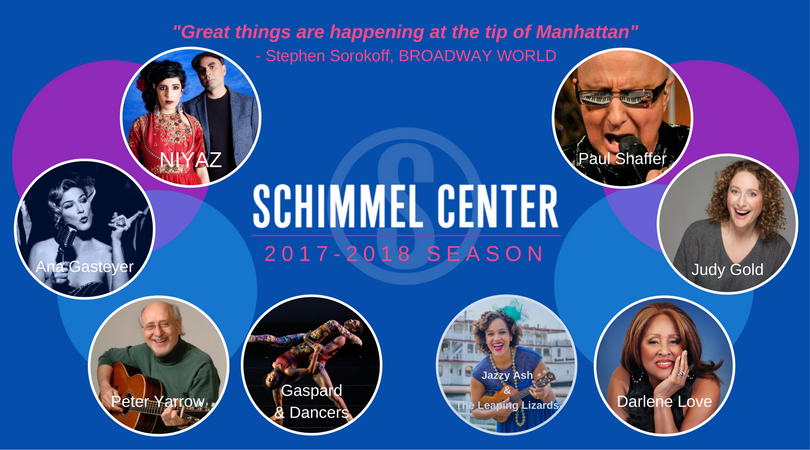
 Schimmel Center seeks to enrich and engage our audiences by bringing world-class talent to Lower Manhattan. Our programming features internationally-acclaimed talent in the areas of music, dance, cabaret, comedy and family programming
Schimmel Center seeks to enrich and engage our audiences by bringing world-class talent to Lower Manhattan. Our programming features internationally-acclaimed talent in the areas of music, dance, cabaret, comedy and family programming 


